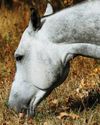
The hock, situated between the foot and the stifle in the horse, is one of the most complex joints in the equine skeleton. To understand swellings of the hock, it is necessary to know the anatomy of the hock region. The horse’s hock is composed of six bones, four joints and multiple tendons and ligaments. The largest joint at the top of the hock is known as the tibiotarsal joint with the other three smaller joints, the proximal intertarsal, distal intertarsal and tarsometatarsal joints, situated below this joint. It is damage to the capsules of these joints and the bursa or sheaths associated with the tendon and ligaments in this region that causes swellings of the hock region.
Hock movement
The majority of the movement in the hock occurs in the tibiotarsal joint with movement of the other joints limited by the ligaments that surround them and their robust joint capsules. The main movement of the hock is by flexion and extension, although rotational and sliding movements do occur in the lower smaller hock joints.
Competition horses require a full range of extension and flexion of the hock to achieve sufficient hindlimb movement. The hock is particularly important in dressage horses and showjumpers where the degree of collection and hindlimb impulsion is required to be at its greatest. Very significant forces are exerted through the bones, ligaments and joint capsules that comprise the hock in these horses. It is therefore not surprising that the hock is the most common site of hindlimb lameness in the competition horse.
There are several specific conditions that can cause swelling of the hock region.
Bog spavin
この記事は HQ magazine の January 2018 版に掲載されています。
7 日間の Magzter GOLD 無料トライアルを開始して、何千もの厳選されたプレミアム ストーリー、9,000 以上の雑誌や新聞にアクセスしてください。
すでに購読者です ? サインイン
この記事は HQ magazine の January 2018 版に掲載されています。
7 日間の Magzter GOLD 無料トライアルを開始して、何千もの厳選されたプレミアム ストーリー、9,000 以上の雑誌や新聞にアクセスしてください。
すでに購読者です? サインイン

The Science Behind Tapering
The science behind tapering

Horse Treats
The ultimate guide

Horsey Hair Care
Tips and tricks for a healthy mane and tail

Horsey Hydration- The Importance Of Water In Winter
The importance of water in winter

A Horseback Safari
Abelana Game Reserve

The Psychology Of Riding Performance
Intrinsic motivation, part 7

10 Best Life Lessons From Horses
Life lessons from our horses

Breaking New Ground
The evolution of the Callaho Online Auction

Horse Psychology 101
Part 3: The horse's cognitive abilities

Colic Part 1
An owner’s worst nightmare